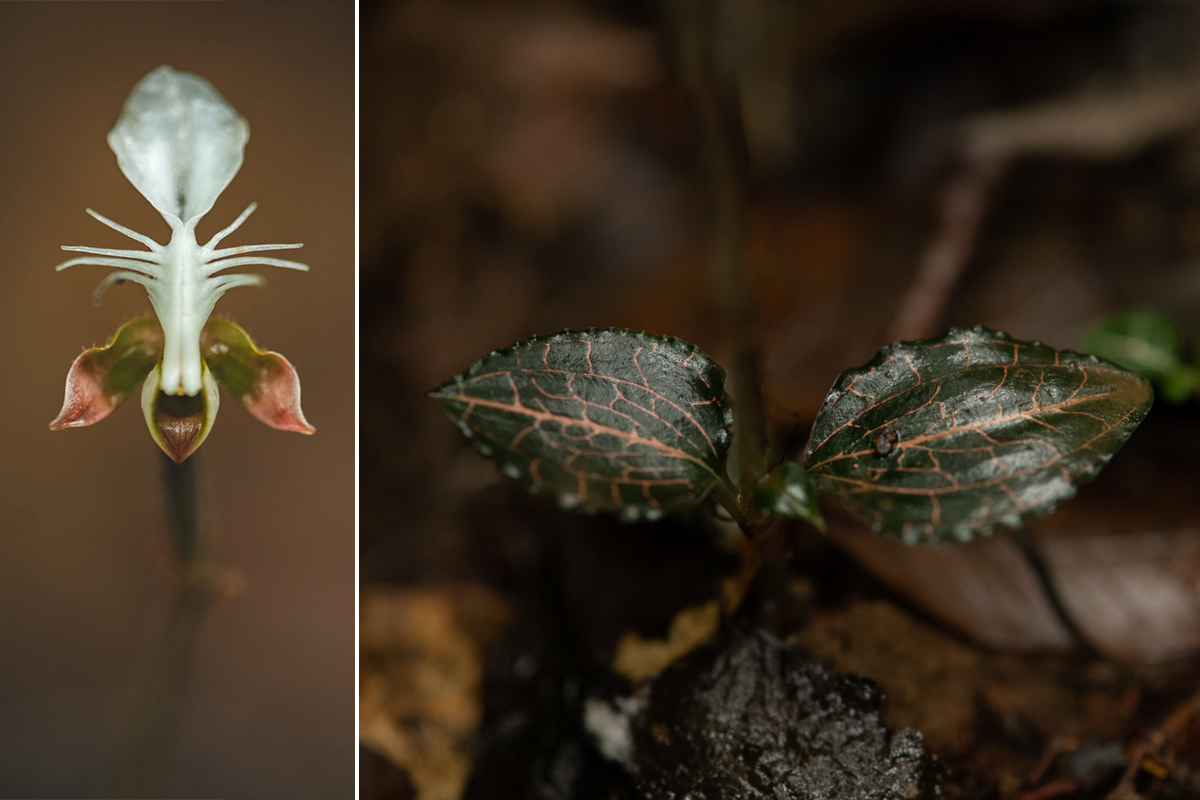- Bangladesh has lost 32 orchid species from nature in the last hundred years out of 188 once-available species.
- Habitat destruction, overharvesting, and indiscriminate collection for sale in local and international markets cause the disappearance, researchers say.
- Considering the unique position of orchids in the ecosystem and their herbal, horticultural and aesthetic value, researchers consider this loss alarming.
Among the 188 identified orchids once found in Bangladesh, 32 are extinct from nature in the last few decades, according to a study published in the now-defunct International Journal of Ecology and Environmental Sciences. The Revelator also published a story based on the findings.
Theocostele alata, Anoectochilus roxburghii, Habenaria viridifolia and Spathoglottis pubescens are some of those that disappeared from nature.
The findings, which came from 23 years of research led by Chittagong University’s botany professor Kamrul Huda, blamed habitat destruction and overharvesting as the causes behind their disappearance. However, the study could not determine the exact time frame in which the species disappeared but noted it likely happened within the last century based on available descriptions in different texts and photographs.
Considering the unique position of orchids in the ecosystem and their herbal, horticultural and aesthetic value, researchers consider this loss alarming.
“The existence of orchids in any forest means biodiversity is balanced. But unfortunately, Bangladesh still takes it as an ornamental object,” said professor Gazi Mosharof Hossain, department of botany, Jahangirnagar University.
There are two types of orchids. Terrestrial orchids grow on land while epiphytic orchids grow on trees. This second type is not parasitic; they create food from the environment rather than from trees, which they use as shelter.
In Bangladesh, cutting branches and destroying habitats of orchids is common. Meanwhile, Hossain said, authorities are still not taking orchids seriously as an important element of biodiversity. He added that authorities should declare a conservation area where orchids are found. The government also should do more research on orchids in the laboratory to help remove fears and risks of extinction.

The ecological role of orchids in the ecosystem has not drawn the attention it deserves and is often undermined, Hossain said. Orchids are known to be highly advanced plants, developing various apparatuses to attract pollinators. Orchids are indicators of an ecosystem’s health, and their presence signifies the ecosystem is vibrant and lively.
S.M. Sharifujjaman, chief scientist in the flower department of the Bangladesh Agriculture Research Institute, said orchids have “an ecological impact as well as economical, but orchid farming is not yet popular among people. We are working on that. Research is underway to breed orchids, but most research is done at the individual level.” The institute is collaborating with the different researchers from different organisations including universities who are working on orchids. The Bangladesh government has published a document encouraging orchid farming.
Likewise, in Bangladesh, many species of orchids face extinction in many parts of the world. Currently, more than 1,500 orchid species in danger of extinction worldwide have been red-listed by the International Union for the Conservation of Nature (IUCN).
Despite disappearing in Bangladesh, several orchids have crossed the border and found a home in other countries, where some of them still survive. S. pubescens is one of them, and it can still be found in India and China, said Ishrat Jahan, the study’s co-author.
The dependence of orchids on mycorrhiza (fungi) for germination and pollinators (mainly insects) for their propagation are classic cases of interaction with other flora and fauna in nature.
According to an interview with K.S. Shashidhar, former additional principal chief conservator of forests and chief wildlife warden in India’s Nagaland state, who was quoted in a 2020 interview with WCS-India, euglossine bees, native to Central and South America, pollinate as many as 700 species of orchids. Without these pollinators, it would be difficult for the orchids to reproduce in nature.
In some instances, the period between the bees’ emergence from hibernation and the opening of the orchid flower is so precise that if the orchid flower opens later than expected, the bees’ emergence will be delayed. Because they grow slowly, orchids are the last organisms in an environment to die. And once they are gone, their disappearance signifies that the process has progressed to an irreversible point, he added.
Banner image: A Theocostele alata flower. Image by Rkitko via Wikimedia Commons (CC BY-SA 3.0).
Illegal orchid trade threatens Nepal’s ‘tigers of the plant world’
Citations:
Huda, M. K. and Ishrath Jahan (2019). Assessment of conservation status of the family Orchidaceae: possibly extinct species of Bangladesh. International Journal of Ecology and Environmental Sciences Vol.45 No.4 pp.357-367
Platt, J. R. (2020). 32 Orchid species feared extinct in Bangladesh. The Revelator. Retrieved from https://therevelator.org/orchids-extinct-bangladesh/
Rahman, M.A., Huda, M. K. and Rashid, M. E. (2017). Orchid species diversity in Bangladesh and their revised nomenclatural updates. Biodiversity Bulletin Bangladesh 10:1-70, 2017 (June). Retrieved from https://www.researchgate.net/publication/340341427_ORCHID_SPECIES_DIVERSITY_IN_BANGLADESH_AND_THEIR_REVISED_NOMENCLATURAL_UPDATES
Shashidhar, K. S. (2020). Orchids Exquisitely Vibrant and Ecologically Vital. WCS-India. Retrieved from https://india.wcs.org/Newsroom/Blog/ID/15072/Orchids-Exquisitely-Vibrant-and-Ecologically-Vital
